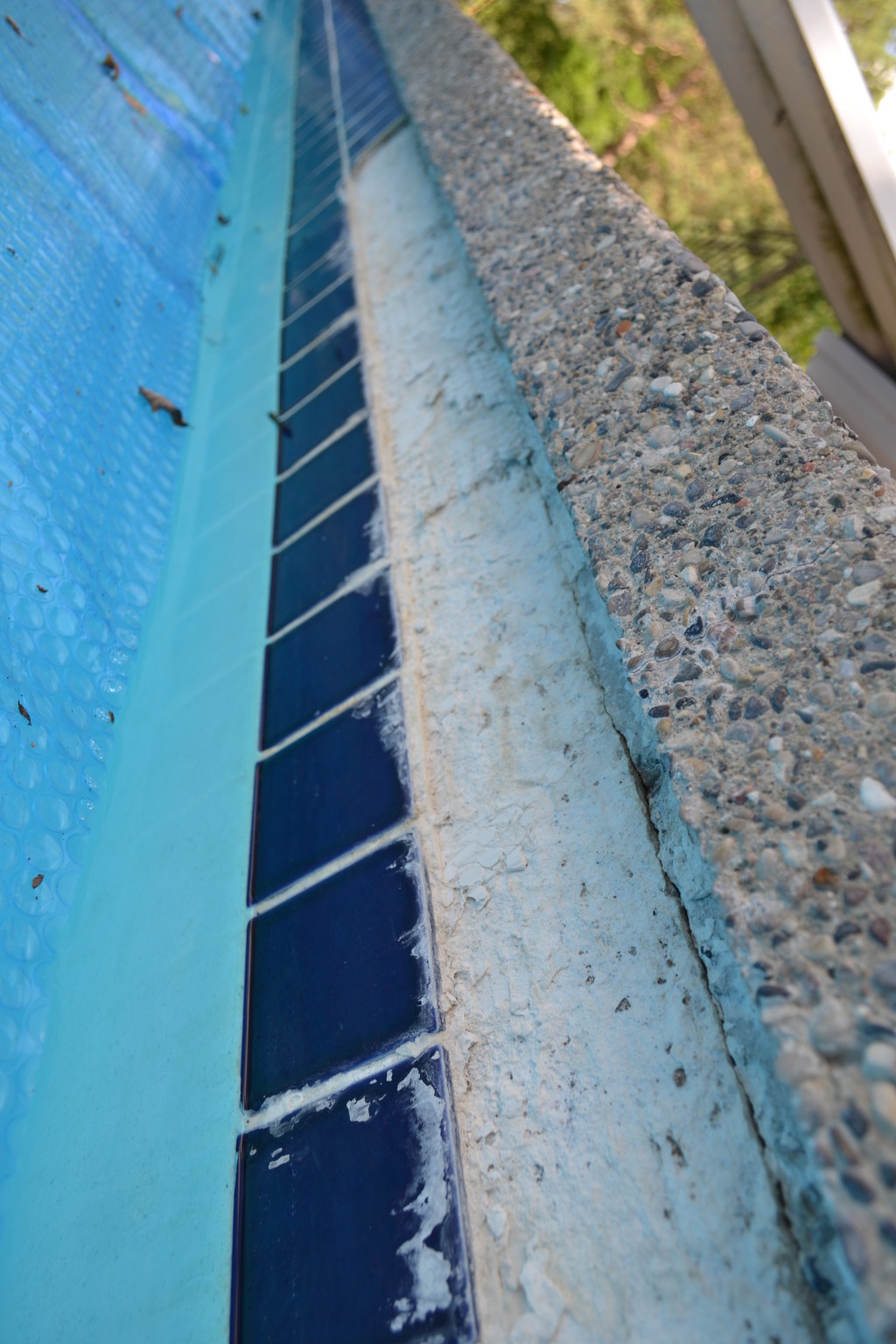Keeping your pool looking luxurious and your water sparkling can be a daunting task. It really boils down to one simple thing- regular maintenance. Sometimes even if you are performing regular maintenance on your pool, accidents happen and scale and stain can develop. Ask the Pool Guy has some tips to help you rid your pool of scale and stain.
So what is scale? It typically appears as calcified, white deposits. It ends up in your pool because of too much calcium and unbalanced water chemistry. Either high pH, alkalinity, hardness qualifies as unbalanced water chemistry. The combination of these things causes scale.
Not only is scale unsightly on the wall and floor of you pool, but it can actually cause serious damage to your pool and pool equipment. It becomes a problem when it builds up in the plumbing system of your pool. This can affect water circulation and filtration. Also, if scale builds up in or on your pool equipment it can cause equipment failure and the premature need to replace it.
If you notice scale in your pool, the first thing you need to do is test and adjust the water chemistry. After you have worked to get your water chemistry in the appropriate range, add a metal sequestering agent designed for calcium. This will remove the scale. This agent is a chemical that removes metal ions from a solution by forming a complex ion. It binds to the metal and prevents it from depositing scale and stain in your pool. As this agent slowly breaks down in your pool, it is important to add more as needed. You want to maintain the correct water balance.
What is stain? Stains are discoloration in your pool that is typically a result of unwanted water contaminants. These could be iron, copper, and manganese. They find their way into your pool through various means. Some might be:
- Salt added to a salt-water pool
- Fill water
- Liquid chlorine
- Black spots in the fiberglass
- Algaecides which contain metals
- Leaves from algae
- Oxidation
- Scale
For those who own fiberglass pools, be aware these pools are particularly prone to metal stains. They usually appear after the pH is raised or when chlorine is added.
Organic stains left by algae or leaves can sometimes look similar to metal stains. They will leave a mark when cleaned up but are easier to remove.
Metal stains can color the water, making it appear green, blue, or yellow. In these cases, colored water is not viewed as tropical or exotic. Colored water from a result of staining and scale should be treated as soon as possible. When your pool is discolored from stain, it will still be transparent. If you notice cloudy or murky water, it most likely has nothing to do with metals in the water. If you know for sure the stain is a result of metals in the water, try lowering the pH slightly and add metal sequestering agents to remove the color.
Contact Ask the Pool Guy for more questions, concerns, or tips regarding scale and stain.
